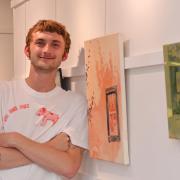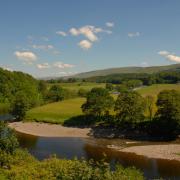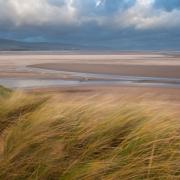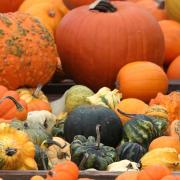Hanging on a wall of the Imperial War Museum in London is a painting from 1943 called The Grasmere Home Guard. It shows in the foreground a group of ageing, volunteer soldiers being issued with rifles and behind them is a landscape of trees and a lake widely recognised to be Rydal Water.
It was painted by Gilbert Spencer, younger brother of the more well-known Stanley Spencer, but also a highly regarded painter and teacher in his own right. In fact, the renowned artist and former professor of painting at the Royal College of Art was once considered by many to be the John Constable of the 20th century, yet until now his legacy has been overshadowed by his older sibling’s fame.
That is about to change with an exclusive exhibition this spring at Abbot Hall, in Kendal, and the publication of a new book, Gilbert Spencer: The Life and Work of a Very English Artist by Paul Gough. It is the first major retrospective of Spencer’s work in over half a century and will bring together the entire breadth of his practice for the first time as well as exploring his fascinating connection with Cumbria.

“The exhibition serves as something of a Gilbert Spencer primer with examples of his work from throughout his long career,” says Nick Rogers, curator of the Abbot Hall exhibition. “And while stylistic similarities between Gilbert and Stanley are evident in some compositions, the exhibition will show that Gilbert was his own man, particularly in its focus on landscape and the Ambleside years.”
Abbot Hall has a long history of staging significant shows of important British artists such as Lucian Freud, Ben Nicholson, Graham Sutherland, LS Lowry, Paula Rego, Bridget Riley, Walter Sickert and Stanley Spencer that complement its collection and now it is time for Gilbert Spencer to step into the limelight. “
Gilbert Spencer has long been a somewhat neglected artist overshadowed by Stanley, and this is a great opportunity to shine a light on the immensely talented younger brother,” adds Nick.
As a painter, muralist, illustrator, educator and author, Spencer’s prolific career extended across six decades and he counted amongst his patrons some of the most influential art collectors of his day, including Lady Ottoline Morrell, Sir Joseph Duveen, Vita Sackville-West and Henry Lamb.

He also flitted around the edges of The Bloomsbury Group and illustrated books for Aldous Huxley and HG Wells, but it was his depictions of rural life in England that he was most highly regarded for.
Spencer celebrated the untamed beauty of the British landscape and captured the workings of rural life like no other artist of his time. “Gilbert was as influenced by the early Italian masters as he was by his contemporaries,” says author Paul Gough.
“But he was little interested in abstraction or modernism for its own sake and he trod a solitary and subtle path in celebrating the English pastoral.”
Spencer’s paintings and illustrations not only depicted the beauty of the English countryside but also the workings of country life. “Gilbert considered himself a countryman at heart,” says Paul. “He understood the rhythm of the agricultural year and marvelled at the innate skills of those who worked the land.”

Although his style remained representational, he continuously experimented with composition, creating elaborate and complicated images of crowded village streets and busy farmyards
“The Slade School of Art, which both Gilbert and Stanley attended, instilled in both artists the importance of accurate observation and drawing,” says Nick.
“Gilbert was superbly skilled and although his landscapes may seem deceptively simple on the surface they are rigorously and expertly composed, often in highly unusual (you might even say eccentric) ways.”
Yet despite his reputation as the most English of painters, Paul says: “He was not a nostalgist; he could see the transformation wrought by mechanisation and he was realistic that the future required change. His paintings capture that moment of transition in farming practices.”

Gilbert Spencer was also a highly respected art teacher having taught throughout his life at prestigious institutions like the Royal College of Art, Camberwell College and the Glasgow School of Art. It was his job as head of painting at the Royal College of Art that brought him to Ambleside.
During The Blitz the decision was taken to relocate some of London’s most valuable artworks, and the Royal College of Art, to Cumbria. Gainsborough’s Blue Boy spent the war at Muncaster Castle and the Royal College of Art was evacuated to Ambleside. On December 2, 1940, nearly 150 students and their professors arrived in the village and every available hotel room, boarding house, barn and outbuilding was billeted to accommodate them all. The college would be based in Ambleside for the next five years, but the effect of their presence can still be felt today in the artistic buzz that has always enveloped Ambleside.
“The final section of the exhibition focuses exclusively on the years Spencer spent in Cumbria as a Royal College of Art evacuee during the Second World War,” says Nick.

Exhibition researcher and local historian Deborah Walsh continues the story: “Etching and engraving were taught in The Salutation and painting on the second floor of the Queen’s Hotel. The Sculpture School was set up in a large unheated garage and the textiles department was based in a converted barn.”
The Picture Post even reported in July 1943 that students had converted “...a cowshed... old pigeon lofts and garage attics into patched-up, whitewashed studios, isolated above rickety ladders”.
“The locals were unsure of their new neighbours,” says Deborah, “and their initial reaction was not too positive. They were suspicious. The students looked very different and were wearing fashions the locals didn’t recognise at all.”
Reports in the local newspaper at the time described the students “as being somewhat strangely garbed”, with young men “sporting wild and woolly beards”, but Deborah adds: “Acceptance of the college as part of village life emerged gradually and the college’s annual exhibition of 1941 attracted 1,000 visitors, far more than at its pre-war London showings.

“One reason was that a lot of the students and lecturers (including Gilbert Spencer) joined the Home Guard. It got together these men of all types and backgrounds and they were seen to be contributing to the local community.
“This was a marvellous exercise in integration – the kind you can only really experience in times of war or upheaval.” Spencer, always most at ease in the countryside, took well to this new locale. His output focused on the Lake District landscape and he even embarked on a series of portrait commissions of his hosts. While in Ambleside the Imperial War Museum commissioned a number of pieces of work from him including The Grasmere Home Guard that hangs in The Imperial War Museum. “Service in the Lake District during World War Two exposed Spencer to a very different landscape, an occasionally daunting place of steep hillsides and large tracts of water,” says Paul.
“He adjusted his art slowly to these new demands, but the Lakeland peaks became the dramatic backdrop for some of his most impressive large figure compositions, creating rich narratives of hunting scenes and vivid renditions of armed platoons on the march watched over by cud-chewing cattle.”

Joining the Home Guard in Ambleside also served as inspiration for the series of satirical but affectionate comic drawings of the life and times of the Home Guard which to modern eyes are reminiscent of the television show Dad’s Army.
Spencer, himself a First World War veteran, sent the drawings off to a publisher but the works were intercepted by an official at the Royal Mail who ripped them up as an act of censorship and returned them to sender.
Paul Liss, of fine art dealers Liss Llewellyn which has loaned some of the cartoons to Abbot Hall for the exhibition, says: “At the time people would have thought these works were terribly offensive as the country was at war but subsequently they became of point of great nostalgia and laughter.”
Luckily, Spencer had the paintings repaired but you can still see the rips from where they were censored if you look closely. “Usually that sort of damage would destroy most of its value but here the damage is intrinsic to their back story,” adds Paul Liss. There will also be a series of talks throughout the exhibition that delve further into the stories of Gilbert Spencer’s time in Ambleside including a visiting lecture by Paul Gough on Spencer’s life. A host of extra materials prepared by Deborah Walsh and renowned artist and Ambleside resident Russell Mills will be available in digital form on the Abbot Hall website and Bloomberg app.

“Hopefully, this show along with publication of Paul Gough’s brilliant new monograph will reinstate Gilbert Spencer as an important figure in 20th century British art,” says Nick, “and the door will be open for future explorations of different aspects of his career.”
The Gilbert Spencer exhibition runs at Abbot Hall, Kendal, from March 23-June 29. lakelandarts.org.uk/abbot-hall/


![Cookham Barns 1925, Gilbert Spencer, Abbot Hall [credit Liss Llewellyn] <i>(Image: Liss Llewellyn)</i>](/resources/images/17938067.jpg?type=mds-article-575)
![The beaver and kit spotted at Lowther [Lowther-Estate]](/resources/images/128x89/1x/18601737.jpg)
![The beaver and kit spotted at Lowther [Lowther-Estate]](/resources/images/180x180/1x/18601737.jpg)

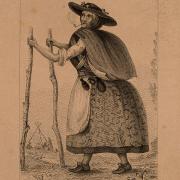

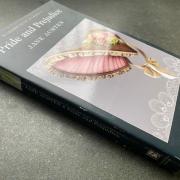

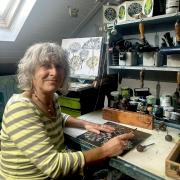

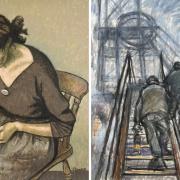

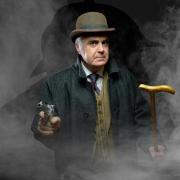
![Julie Carter [Jessie Leong]](/resources/images/128x89/1x/18534684.jpg)
![Julie Carter [Jessie Leong]](/resources/images/180x180/1x/18534684.jpg)

